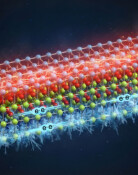Hyundai's North Korean project
Hyundai's North Korean project
Posted August. 10, 2000 20:28,
North Korea`s decision to accept Hyundai`s proposal to transform Kaesong into a special economic zone and tourist site signals another large step toward openness by the once reclusive Communist state.
North Korean authorities` decision to open up famous sites like Manwoldae or Parkyon Falls in Kaesong carries far more weight than their agreement to grant access to Mt. Kumgang, as future tourists to Kaesong will have to travel between the divided Koreas by land.
Whereas the Hyundai cruiser chattered for the Mt. Kumgang tour travels on the high seas and tourists rarely come into contact with ordinary North Korean citizens, the opening of Kaesong will allow South Korean tourist buses to drive past the heavily guarded demilitarized zone and through the city. This will no doubt play a key role in exposing both North Korea and its people to South Korean tourists. It is widely known that the decision to develop the area into a tourist and special economic zone is a result of the political resolution of North Korean leader Kim Jong-il.
Initially, Hyundai chose the western coastal city of Haeju as the candidate site for an industrial park. But insiders said that North Korea refused on the grounds that Haeju was too close to its capital, Pyongyang.
Neighboring China, when it first experimented with special economic zones, chose coastal regions as sites. A faithful student of Chinese economic liberalization, North Korea initially proposed Sinuiju, a border city close to China, as the site for the project, but Hyundai declined. At last, the two sides compromised by selecting Kaesong for development both as an industrial park and a tourist site.
Hyundai has expressed its satisfaction with the new site of Kaesong. The city is only 8 kms or a 10 minute drive away from the truce village of Panmunjom, a great advantage in terms of goods and personnel transport. Starting next year, Hyundai workers may also hop on the Kyongui Railway linking the two Koreas, which is slated for completion by then.
Kaesong boasts the flat plains characteristic of inland regions, making it a favorable plot of land for the construction of an industrial park. And with Yesong and Imjin Rivers nearby, the planned industrial park will have easy access to water.
If the planned project proceeds without any glitches, Kaesong will serve as a hub of inter-Korean economic exchanges. Once the Kyongui Railway opens and travel by sea using Inchon Port becomes available, there is no judging the extent of the synergy effect the project will have on the two Korean economies. Hyundai envisions a 5.6 million pyong (1 pyong equals 3.3 sq. meters) site for the industrial park and another 2.4 million pyong area for the parks` infrastructure. There will also be a sprawling 12-million pyong support city surrounding the industrial park. Overall, the economic zone is expected to be 20 million pyong in area, and will have the capacity to host 850 businesses, employ some 220,000 North Korean workers and produce exports likely to reach $20 billion per year.
During the two-day negotiations with the North, Hyundai also received concessions from Pyongyang concerning the Mt. Kumgang tour. The North agreed on the construction of recreational facilities such as a golf course, the building of two hotels, one of which will be on the sea, opening the tour to more foreigners and shortening travel by four hours. The accord is said to have cleared away some of the major inconveniences of the Mt. Kumgang tour. Meanwhile, North Korean watchers expressed cautious optimism about the Kaesong project, saying that it would be another opportunity to improve relations between the two Koreas if it goes ahead as planned.
They added that it will be another test of the North`s commitment to Hyundai`s various North Korean projects.







